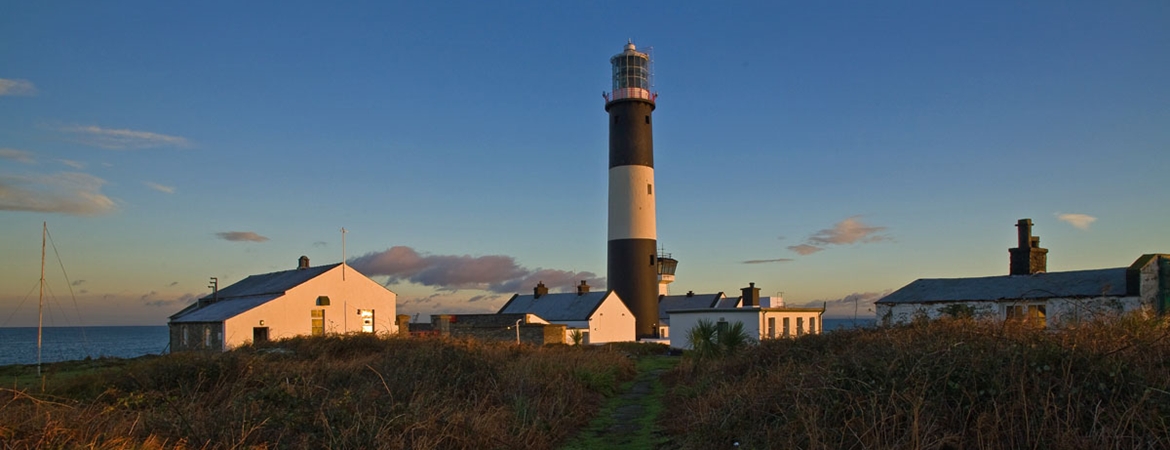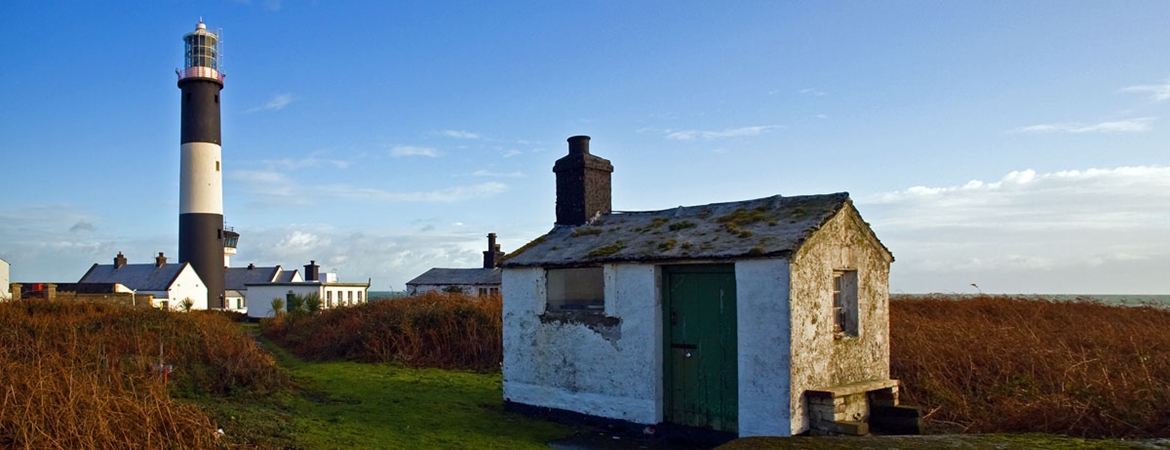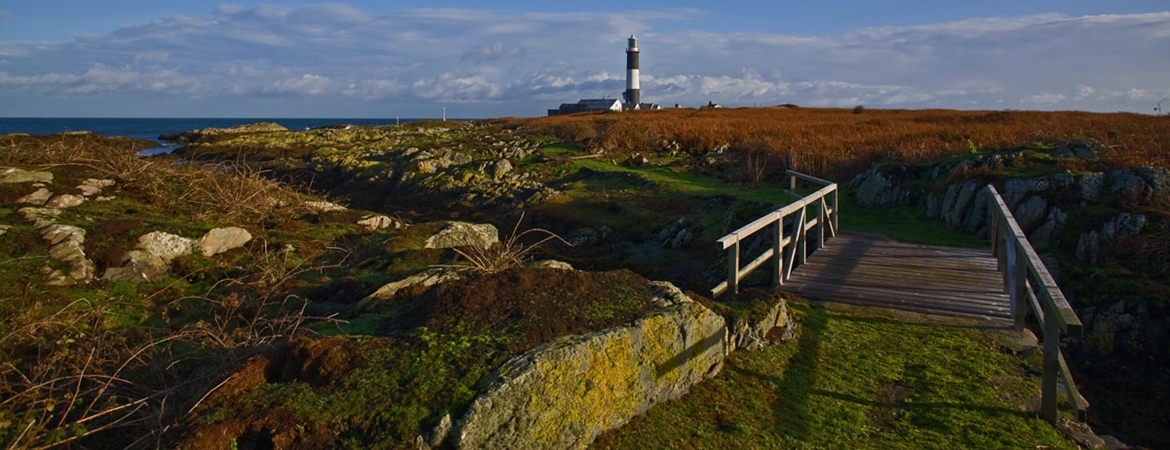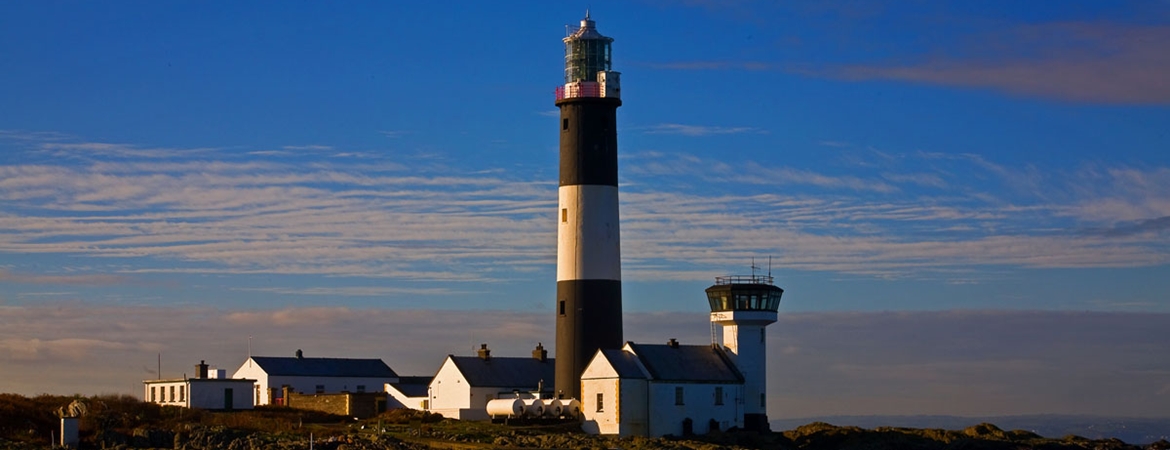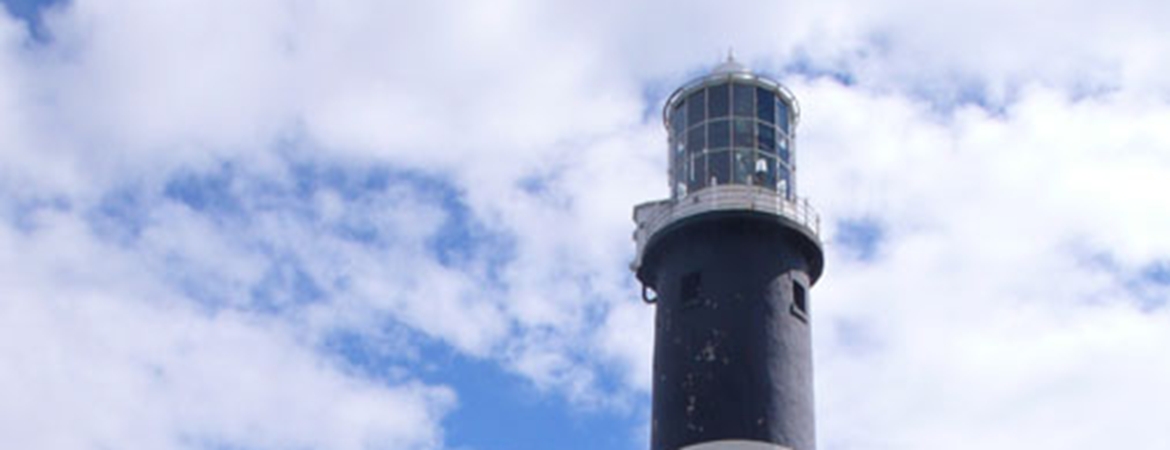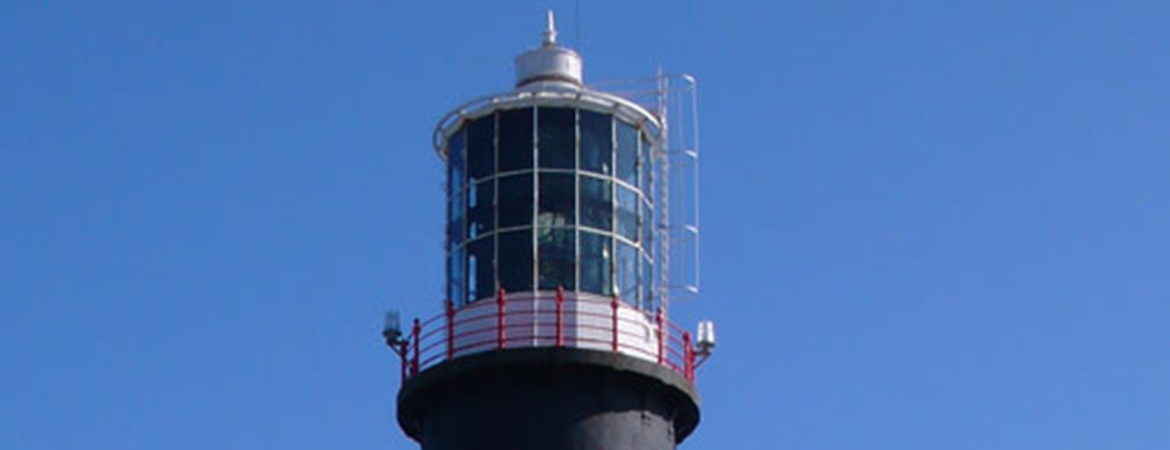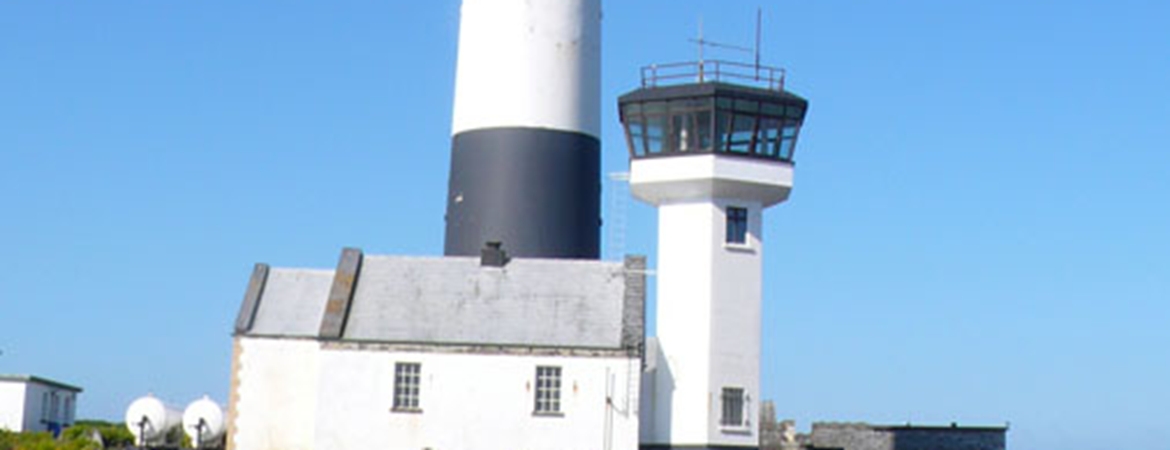The present lighthouse and fog signal on Mew Island was established on 1st November 1884 and its predecessor on Lighthouse Island or Lesser Copeland Island was discontinued. The latter was established in the early 18th century being one of four cottage type coal burning lights around the Irish coast. The others were at Loophead, Old Head of Kinsale and Howth Head. A fifth coal burning light was at Hook Tower. Prior to Copeland there had been a light at Island Magee near Carrickfergus, probably another cottage type light. It lasted only three or four years in the 1660s.
In 1796, Thomas Rogers added a six foot diameter lantern into a corner on top of the Copeland Island 40 foot high square tower and changed the lighting from coal to oil using six Argand lamps each with its own reflector.
After the Revenue Commissioners had handed over the lighthouses to the Corporation for Improving the Port of Dublin in 1810, one of the first stations to be improved was Copeland. A new 52 foot high tower and lantern was built alongside the old tower to the design of the Corporation's Inspector of Works and Inspector of Lighthouses, Mr George Halpin, and a fixed light with 27 Argand lamps and reflectors were lit on 24th January 1815. The actual light was 131 feet above sea level.
Early in 1851 a large fog bell operated by a weight driven machine, which was periodically wound up by the Keepers, was located in the old Lighthouse Tower.
As commerce increased and sailing vessels were replaced by steam driven vessels, a better positioned light was looked for and in January 1875 the Belfast Harbour Commissioners were the first to request the removal of the Copeland light to Mew Island. Work on the new station eventually commenced in 1882, designed by the Engineer of the Commissioners of Irish Lights, William Douglass. The new light and fog signal came into operation on 1st November 1884. The light had a character of four four second flashes in 20 seconds repeated every minute, and the optic was triform, that is three superimposed eight sided optics each with its own burner. In clear weather only 32 of the 108 jets were lit in the lowest burner, in hazy weather all jets were lit in the lowest burner, and in foggy conditions all three burners were lit with a total of 324 jets - the candle power increasing from 13,500 to 189,500. The optic was manufactured in Paris by Messrs Barbier and Fenestre and supplied by Messrs Edmundson & Co of Dublin. Edmundson's also supplied the lantern, gas works and fog signal plant.
Messrs Dixon & Co of Belfast were the contractors for the buildings and Messrs H. Fulton of Belfast for the five keepers' shore dwellings at Donaghadee.
The siren fog signal was in duplicate, the air compressors were driven by Crossley 8 HP Otto gas engines and each set had a wrought iron air receiver and two sirens, one high note and one low, operated at 40lbs per square inch. The character of the signal was a four second blast low note, twelve seconds silence, four seconds blast high note, one hundred seconds silence.
Gas was made from cannel coal in retorts burning furnace coal. After processing, gas was stored in two, later increased to three, 25 foot diameter gas holders each with a 46,000 cubic foot capacity. The average gas consumption per annum was 525,000 cubic feet.
The tower and dwellings are of rubble masonry quarried on the island, with granite dressings quarried near Newry. The tower is stuccoed in Portland cement.
The siren fog signal was improved in 1899 by replacing the two Crossley compressor sets with three Crossley 13 HP engines with a 14" diameter, 21" stroke air compressing cylinder. The new siren was repositioned under the balcony of the tower instead of on top of the engine room roof.
Two further changes took place with the fog signal machinery in 1929 when the siren was replaced by a diaphone giving 4 blasts every 30 seconds positioned on the lantern balcony and three single cylinder Petten oil engines drove Reavell rotary compressors. In 1948 three Ruston and Hornsby 24 hp, 5YHR oil engines drove Reavell DSA9 compressors. From 1978 the light was exhibited in poor visibility when the fog signal was sounding.
In 1928 the gas making plant, the last around the coast, was discontinued and a biform (two tier) optic transferred from Tory Island replaced the original triform which had been giving trouble for some time. Paraffin vapour burners were used instead of coal gas. The character was altered to four flashes every half minute. Paraffin gave way to electric lamps on 15th July 1969 when the intensity of the light was increased giving a range of 30 nautical miles. The duration of the flash was decreased to 0.2 seconds.
A radiobeacon was established on 8th August 1949.
Repairs to the tower were carried out from September 1953 to January 1954 when the tower which had always been painted black acquired a 27 foot deep white band approximately half way up. The lantern was painted white.
The Keepers' shore dwellings at Donaghadee were discontinued and sold in October 1957 and the Keepers then lived in homes of their own, travelling to and from Donaghadee when their tour of duty on the island commenced or finished. A local boat contractor carried out the relief from Donaghadee every two weeks.
From the 14th July 1981 the Keepers on Mew Island monitored the South Rock Automatic Lightfloat situated 32km to the south, off the County Down coast.
In June 1991, the diaphone fog signal service at the station was permanently discontinued.
A radar responder beacon (Racon) was established at Mew Island on 1st March 1993.
The lighthouse was converted to automatic operation and, as a consequence the lighthouse keepers were permanently withdrawn from the station on 29th March 1996. The station is in the care of an Attendant and the aids to navigation are also monitored via a telemetry link from Irish Lights Dun Laoghaire.
By the early 1990s utilisation of radio direction finders by mariners was to a great extent superseded by more modern technology. Following the mandatory requirement for ships to carry radio direction finders as part of their equipment the Commissioners discontinued their medium frequency radiobeacon service on 1st February 1999.
Mew Island Lighthouse
|
Position: |
54°41.923' North 05°30.824' West |
Aids to Navigation |
|
|
Sectors: |
|
|
Height of Tower: |
37 metres |
|
Height of Light MHWS: |
37 metres |
|
Character: |
Fl (4) W 30s. Exhibited by day in poor visibility. |
|
Range: |
24 nautical miles |
|
Radar Beacon: |
Morse 'O' on vessel's radar display. |
|
AIS: |
AIS |
Tags :
lighthouse
,
mew

